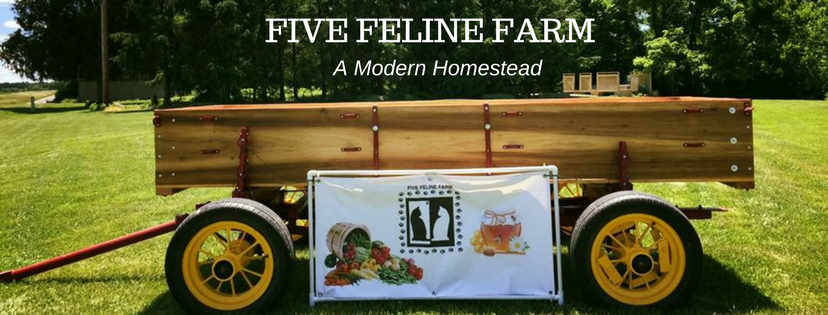There are some very good reasons to host honeybees on your property. Then there are some FABULOUS reasons. Read on to find out why Five Feline Farm started in the honeybee business.
Honey of course. There is only one way to get real honey. From honeybees.
Whether you want honey just for personal use or to sell surplus, the only place to get honey is from honeybees.The worker bees spend the majority of their short lives gathering nectar and pollen from flowers. The nectar is returned to the hive, passed off to a sister bee and mixed with enzymes. This enriched nectar is placed in a cell, combined with the deposits of many other worker bees then fanned to dehydrate into honey. Once the honey has reached the perfect moisture content, the cell is capped off and the process begins again in the next cell. Naturally this doesn’t happen one cell at a time but hundreds of cells at a time by tens of thousands of bees.

2. Pollination. As the bees move from flower to flower they transfer pollen.
This is almost a side effect of the nectar gathering process. Honeybees have sticky hairs on their bodies that capture pollen granules when they visit flowers. As they move to the next flower and land, a bit of pollen falls off and pollinates that flower. Some crops such as almonds are totally dependent on the honeybee for pollination.
Although some of the pollen collection is accidental, there is also some intentional pollen harvesting. Pollen is a protein. It is mixed with honey and enzymes to create the “bee bread” fed to young larvae.
Here on the Farm, we have noticed improved production in the gardens after adding colonies of honeybees.
3. Fun. Honeybees are fascinating to watch.
We placed a bench just a few yards from the hives and off to the side. This creates an excellent place to sit in the evening to watch the bees come in with the fruits of their labor. Close observation reveals varying hues of pollen in the little pollen baskets on the worker’s back legs.
Trying to watch a single bee come out of the hive, take off from the entrance, circle once or twice and head out to the current nectar flow is amazing. I rarely use that word because it is so overused, but sometimes there is simply no other way to describe something. This is one of those times.
Do you agree with these FABULOUS reasons? Do you want to start keeping honeybees? If you do, start here to learn about some of the parts of the hive.






